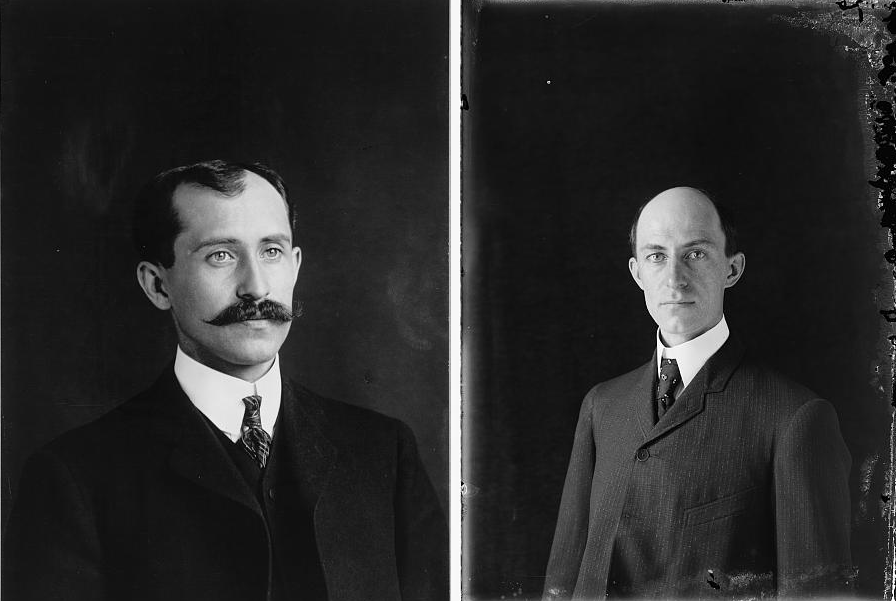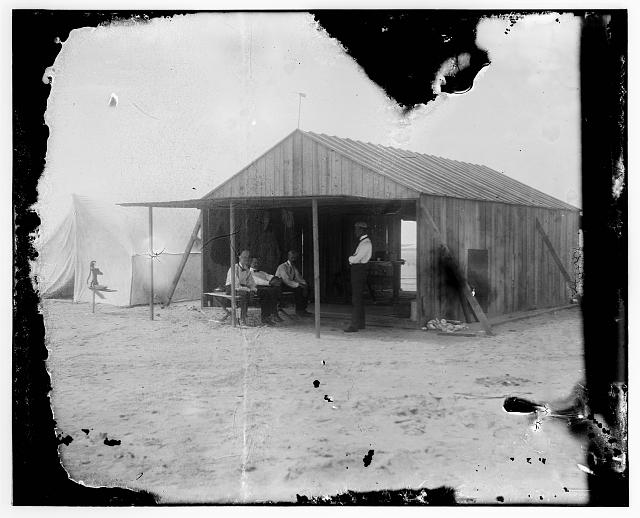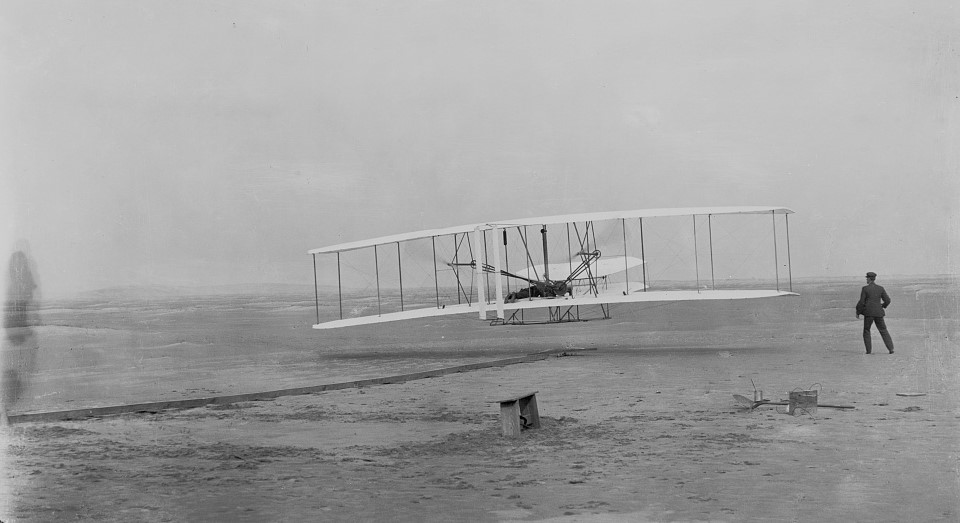The Wright Brothers' Influences and Inspirations
Beginnings
25 October 2020
Most people have heard of the Wright brothers and that fateful day in 1903 when they flew their powered airplane for the first time. But what got them interested in flight?
It all starts with their childhood. Wilbur Wright was born in April 1867, and Orville was born four years later in August. Their father, Milton, was a minister, who would often take extended trips away from his family.
From a young age, the Wrights were encouraged to learn about anything that interested them. In fact, Orville later realized that without this nurturing environment, they may not have ever decided to pursue aviation:

On the left, Orville Wright at 34 and on the right, Wilbur Wright at 38. Images via Library of Congress.
We were lucky enough to grow up in an environment where there was always much encouragement to children to pursue intellectual interests; to investigate whatever aroused curiosity. In a different kind of environment, our curiosity might have been nipped long before it could have borne fruit.

A drawing of the toy helicopter the Wright brothers played with during their childhood. Image © Smithsonian Institution
One day in 1878, upon returning home from a trip, Milton gave the boys a toy helicopter, powered by a rubber band. Upon being thrown in the air, the helicopter did not fall to the ground, but "struck the ceiling, where it fluttered awhile, and finally sank to the floor". The young children were fascinated by it. Although it quickly broke, Wilbur and Orville never forgot about it.
Several years later, in 1896, Orville became bedridden with typhoid fever. Coincidentally, Otto Lilienthal, another aviation pioneer, had died around the same time in a gliding accident. During that time, Wilbur and their sister Katharine spent long amounts of time taking care of Orville. Wilbur read aloud about Otto Lilienthal and his gliding experiments.
Being avid readers, the Wright brothers became very interested in flight, and quickly exhausted the resources available to them. In 1899, Wilbur Wright wrote to the Smithsonian Institution, requesting any available materials they might be able to supply to him.
I wish to avail myself of all that is already known and then if possible add my mite to help on the future workers who will attain final success.
Otto Lilienthal, Louis Pierre Moulliard, and others. Now fully interested in the problem of flight, the Wright brothers read works by other aeronautical pioneers, such as Octave Chanute, Samuel Langley,
In 1901, the Wright brothers personally met Octave Chanute, who proved to be a valuable mentor in their experiments. Chanute took great interest in the developments of the Wright brothers and was immediately able to see the potential they had.
Throughout their development of their gliders and airplanes, Wilbur and Orville never shied away from the importance of research. They never ceased to consult other publications and pioneers of flight. If it were not for those who came before them, the Wright brothers likely would not have found the success that they achieved.
On December 17th, 1903, the Wright brothers’ work finally paid off with the first powered, controlled flight.

Orville and Wilbur Wright in Kitty Hawk with Octave Chanute and Edward Huffaker, another glider maker. Image via Library of Congress.

The first flight of the 1903 Wright Flyer on December 17th, 1903. Image via Library of Congress.
References
- Crouch, Tom D. "Wright Brothers." Encyclopædia Britannica. Encyclopædia Britannica, inc., September 29, 2020. https://www.britannica.com/biography/Wright-brothers.
- General Correspondence:Chanute, Octave. 1900. Manuscript/Mixed Material. https://www.loc.gov/item/wright002400/.
- Nolan, Patrick B. "The Wright Brothers Collection." Aerospace Historian 31, no. 4 (1984): 272-76. Accessed October 26, 2020. http://www.jstor.org/stable/44525294.
- Octave Chanute Papers:Special Correspondence--Wright Brothers. 1900. Manuscript/Mixed Material. https://www.loc.gov/item/wright002804/.
- "The Road to the First Flight." National Parks Service. U.S. Department of the Interior, April 14, 2015. https://www.nps.gov/wrbr/learn/historyculture/theroadtothefirstflight.htm.
- Wright, Wilbur. "Letter Dated May 30, 1899." Smithsonian Institution Archives, May 30, 1899. https://siarchives.si.edu/history/featured-topics/stories/letter-dated-may-30-1899.
- "Wilbur Wright." Scientific American 106, no. 23 (1912): 518. Accessed October 26, 2020. http://www.jstor.org/stable/26010730.
- Wright, Wilbur, and Orville Wright, photographer. Visitors and fellow campers in the Wrights' work shed at Kitty Hawk, North Carolina. Left to right: Octave Chanute, Orville Wright, and Edward C. Huffaker seated at left and Wilbur Wright standing. Kitty Hawk North Carolina, 1901. Photograph. https://www.loc.gov/item/2001696476/.
- Wright, Wilbur., Wright, Orville. The Early History of the Airplane.
- Wright, Wilbur, Orville Wright, and John T Daniels, photographer. First flight, 120 feet in 12 seconds, 10:35 a.m.; Kitty Hawk, North Carolina. Kitty Hawk North Carolina, 1903. Photograph. https://www.loc.gov/item/00652085/.